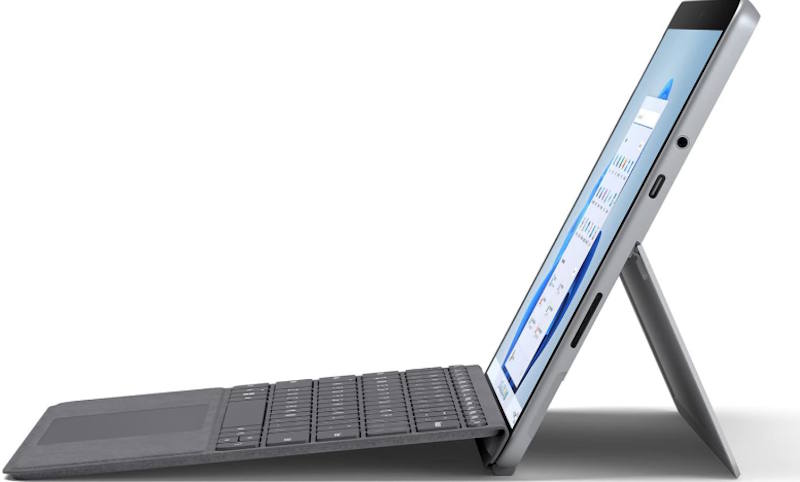The Microsoft Surface Go 3 is a compact and versatile device designed for students, professionals, and casual users. However, like any other piece of technology, it comes with its fair share of issues. In this article, we’ll cover the most common problems with the Surface Go 3, explain why they occur, and provide step-by-step solutions to fix them.

Slow Performance and Lag
Why It Happens
The Surface Go 3 has a low-power Intel processor, which may struggle with demanding tasks, especially if multiple applications are running at once. Background processes and insufficient RAM can also cause lag.
How to Fix It
- Close unnecessary apps: Use Task Manager (Ctrl + Shift + Esc) to end resource-heavy programs.
- Disable startup programs: Open
Task Manager > Startup taband disable non-essential apps. - Adjust power settings: Go to
Settings > System > Power & Batteryand select “Best performance.” - Upgrade storage with a microSD card: Moving files to a microSD card can free up space and improve performance.
- Regularly update Windows: Keeping the system updated ensures you have the latest performance optimizations.
Battery Drains Quickly
Why It Happens
Battery drain can occur due to high screen brightness, background apps, or excessive use of the device while charging. Poor battery health over time can also be a factor.
How to Fix It
- Lower screen brightness: Reduce brightness via
Settings > Display. - Turn on Battery Saver: Go to
Settings > System > Power & Batteryand enable Battery Saver. - Disable unnecessary background apps: In
Settings > Apps > Installed Apps, disable apps that run in the background. - Update drivers and firmware: Use Windows Update to install the latest patches.
- Avoid extreme charging habits: Don’t let the battery drop to 0% too often, and avoid leaving it plugged in constantly.
Wi-Fi Connectivity Issues
Why It Happens
Wi-Fi issues can be caused by outdated network drivers, interference, or incorrect network settings.
How to Fix It
- Restart your router and Surface Go 3.
- Update Wi-Fi drivers: Go to
Device Manager > Network Adapters, right-click your Wi-Fi adapter, and select “Update driver.” - Forget and reconnect to the network: Open
Settings > Network & Internet > Wi-Fi, select your network, and click “Forget.” - Reset network settings: Go to
Settings > Network & Internet > Advanced Network Settings > Network Reset.
Screen Flickering
Why It Happens
Screen flickering can occur due to outdated drivers, display settings, or software conflicts.
How to Fix It
- Update display drivers: Open
Device Manager > Display Adapters, right-click your GPU, and update the driver. - Check for Windows updates: Updates often fix display issues.
- Disable hardware acceleration: If flickering happens in a specific app (e.g., web browsers), try disabling hardware acceleration in its settings.
- Adjust the refresh rate: Go to
Settings > Display > Advanced Display Settingsand set an appropriate refresh rate.
Touchscreen Not Responding
Why It Happens
A non-responsive touchscreen may be due to outdated drivers, software bugs, or hardware malfunctions.
How to Fix It
- Restart your device: A simple reboot can resolve minor touchscreen issues.
- Clean the screen: Dirt or smudges can affect touchscreen sensitivity.
- Update touch drivers: In Device Manager, expand “Human Interface Devices,” right-click “HID-compliant touch screen,” and select “Update driver.”
- Run Windows Troubleshooter: Go to
Settings > Update & Security > Troubleshootand select “Hardware and Devices.” - Perform a system reset: If all else fails, back up your data and reset the device (
Settings > System > Recovery > Reset this PC).
Surface Pen Not Working Properly
Why It Happens
The Surface Pen may stop working due to Bluetooth connectivity issues, dead batteries, or outdated firmware.
How to Fix It
- Check the battery: If the pen uses a replaceable battery, try changing it.
- Reconnect the pen: Go to
Settings > Devices > Bluetooth & other devices, remove the Surface Pen, and pair it again. - Update pen firmware: Install any available updates via Windows Update.
- Test the pen on another device: If it doesn’t work, the pen itself might be faulty.
Overheating Issues
Why It Happens
The Surface Go 3 has passive cooling, meaning it lacks a fan. Prolonged use of demanding applications or charging while using the device can cause it to heat up.
How to Fix It
- Avoid using it on soft surfaces: Use a hard, flat surface to allow heat to dissipate.
- Close resource-intensive apps: Check Task Manager for apps consuming too much CPU.
- Limit background processes: Disable unnecessary startup programs.
- Allow it to cool down: If it overheats, turn it off and let it rest for a while.
Conclusion
While the Surface Go 3 is a solid device, it isn’t free from issues. By following these troubleshooting steps, you can keep your device running smoothly and get the most out of your investment. If a problem persists despite these fixes, consider contacting Microsoft Support for further assistance.